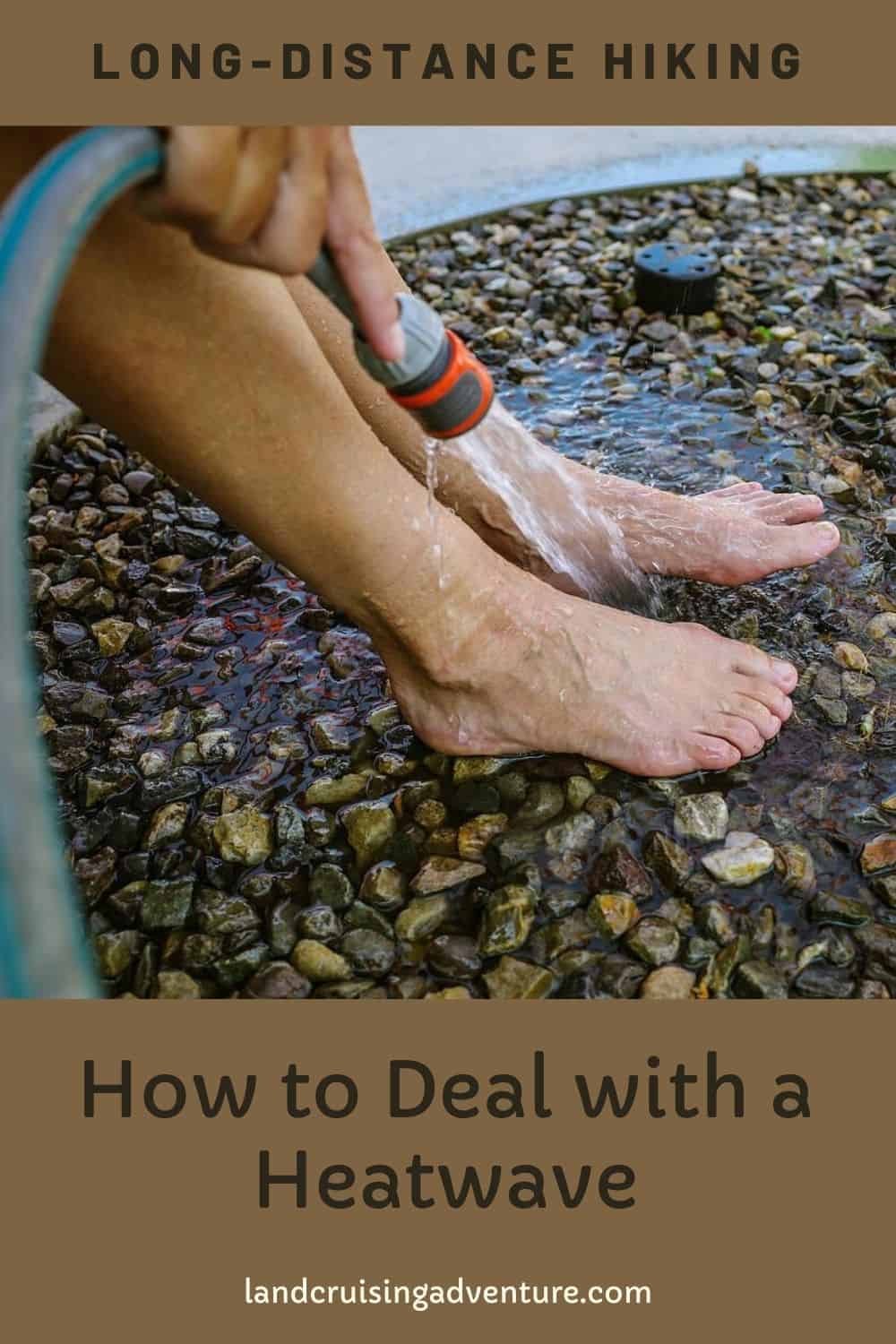Hiking in a heatwave can be a challenge. It requires preparation and caution.
A hike during a heatwave might seem like an adventure, but it can quickly turn dangerous. High temperatures and direct sunlight can cause dehydration, heat exhaustion, or even heatstroke. Understanding how to stay safe is crucial. This blog post will guide you on handling such conditions.
We will share practical tips to keep you cool, hydrated, and safe. Whether you are an experienced hiker or a beginner, these tips will help you enjoy your hike even in extreme heat. Stay with us as we explore the best ways to deal with a heatwave on a hike.
Preparing For The Hike
Carry extra water to stay hydrated and cool. Wear light, breathable clothing to beat the heat. Plan shorter hikes during cooler parts of the day.
Before setting out on a hike during a heatwave, preparation is essential. Proper planning ensures safety and makes the adventure enjoyable. Here are some key steps to take before hitting the trail.Check The Weather Forecast
Always check the weather forecast before planning your hike. Weather conditions can change rapidly. Knowing the forecast helps you prepare better. Look for the highest temperatures of the day. Avoid hiking during peak heat hours. Aim for early morning or late afternoon hikes. These times are usually cooler and safer.Plan A Suitable Route
Choose a route that matches your fitness level. Avoid trails with limited shade. Shaded trails offer more protection from the sun. Look for routes near water sources like rivers or lakes. These areas are often cooler and provide a chance to cool down. Make sure the trail has easy access points for emergency situations. Always inform someone about your hiking plan and expected return time. “`
Credit: landcruisingadventure.com
Choosing The Right Gear
Hiking during a heatwave can be challenging. Choosing the right gear is crucial. It helps you stay cool and comfortable. Here are some tips to ensure your gear is perfect for a hot hike.
Lightweight Clothing
Wearing lightweight clothing is essential. It keeps your body cool. Opt for fabrics like cotton or linen. They are breathable and light. These fabrics allow air to circulate.
Avoid dark colors. They absorb heat. Instead, choose light colors. White or pastel shades are ideal. They reflect the sun’s rays.
Consider wearing a hat. It protects your head from the sun. A wide-brimmed hat is best. It shields your face and neck. Sunglasses are also a good idea. They protect your eyes from harmful UV rays.
Breathable Footwear
Breathable footwear is a must. Your feet need to stay cool and dry. Choose shoes made from mesh or other breathable materials. They allow air to flow through.
Avoid waterproof shoes. They trap heat and moisture. This can cause blisters. Instead, go for shoes with good ventilation. Lightweight hiking boots or trail runners are great options.
Pair your shoes with moisture-wicking socks. They keep your feet dry by drawing sweat away. Cotton socks are not recommended. They retain moisture and can lead to blisters.
By following these tips, you can enjoy your hike even in hot weather. Stay cool and safe on the trail.
Staying Hydrated
Hiking during a heatwave can be tough. Staying hydrated is crucial. Your body loses water fast in high temperatures. Let’s explore ways to keep your fluid levels up.
Carry Enough Water
Always pack enough water. Plan for at least one liter per hour of hiking. It might seem heavy, but it’s worth it. Dehydration can lead to serious problems.
Use a hydration pack. It allows you to drink without stopping. You can also carry water bottles in your backpack. Make sure they are easy to reach.
| Hiking Duration | Amount of Water |
|---|---|
| 1 hour | 1 liter |
| 2 hours | 2 liters |
| 3 hours | 3 liters |
Use Electrolyte Supplements
Electrolyte supplements are important. They help balance the minerals in your body. You lose electrolytes through sweat. Without them, you may feel weak or dizzy.
Add electrolyte tablets to your water. They come in many flavors. Some hikers prefer electrolyte powders. These can be mixed directly into your bottle.
- Electrolyte tablets
- Electrolyte powders
- Electrolyte drinks
Choose the option that suits you best. Your body will thank you.

Credit: www.ebay.com
Timing Your Hike
Dealing with a heatwave during a hike can be challenging. The right timing can make a huge difference. Knowing when to start your hike can help you stay cool and safe. Here are some tips to help you plan the best time for your hike.
Start Early Or Late
Begin your hike early in the morning or late in the afternoon. These times are usually cooler. The sun is not as intense, making it easier to stay comfortable. Starting early helps you finish before the day gets too hot.
Late afternoon hikes can also be pleasant. The temperatures start to drop, and you can enjoy the sunset. Always carry a flashlight if you plan to hike late. Safety is important.
Avoid Peak Sun Hours
The sun is strongest between 10 a.m. and 4 p.m. Avoid hiking during these hours. The risk of heat exhaustion and sunburn is higher. If you must hike during this time, find shaded trails.
Take frequent breaks and drink lots of water. Wearing a wide-brimmed hat and light clothing helps. Stay aware of your body’s signals. If you feel dizzy or very tired, find a cool spot to rest.
Finding Shade
Hiking during a heatwave can be challenging. One of the best ways to stay cool is by finding shade along your trail. This can help you avoid heat exhaustion and sunburn. There are different ways to find shade while hiking, and this section will cover some useful tips.
Identify Shady Spots
Start by scouting the trail for natural shade. Look for areas with dense tree cover. These spots can provide relief from the sun. Pay attention to the terrain as well. Valleys and low areas often have more shade. You might also find shade near large rocks or boulders. These can block the sun and create cool spots.
Another tip is to plan your hike for early morning or late afternoon. The sun is less intense during these times. This means you will find more natural shade. Use a map or trail guide to identify these areas before you start your hike.
Use A Portable Shelter
Sometimes natural shade is scarce. In this case, bringing a portable shelter can be a great idea. There are many options available, from lightweight tarps to pop-up tents.
- Choose a shelter that is easy to carry.
- Look for shelters with UV protection.
- Ensure it is quick to set up and take down.
Setting up a portable shelter during breaks can provide you with much-needed shade. This can help keep your body temperature down. It can also give you a comfortable place to rest and rehydrate.
Consider using a reflective blanket as well. These can be used to create instant shade. Simply attach it to nearby trees or rocks. This can provide a quick and effective solution when you need a break from the sun.
| Portable Shelter Type | Features |
|---|---|
| Lightweight Tarp | Easy to carry, versatile, quick setup |
| Pop-up Tent | Quick setup, UV protection, spacious |
| Reflective Blanket | Compact, multi-use, instant shade |
By combining these strategies, you can effectively manage the heat while hiking. Always prioritize finding or creating shade to stay safe and comfortable.
Listening To Your Body
Hiking during a heatwave can be challenging and even dangerous. It’s crucial to listen to your body and understand its signals. This can help you stay safe and enjoy your hike. Let’s dive into some key aspects to keep in mind.
Recognize Heat Exhaustion Symptoms
Heat exhaustion can creep up on you. Recognizing the symptoms early is vital. Watch out for:
- Heavy sweating
- Weakness
- Dizziness
- Confusion
- Headache
- Nausea or vomiting
If you notice these symptoms, find shade and drink water immediately. Don’t ignore these signs. They can escalate quickly.
Take Regular Breaks
Frequent breaks help your body cool down. Aim to rest every 30 minutes. Find a shady spot or use a lightweight umbrella. During these breaks, rehydrate and eat light snacks to maintain energy levels.
| Time | Activity | Notes |
|---|---|---|
| 30 minutes | Hike | Stay hydrated |
| 5-10 minutes | Break | Rest in shade |
Following this schedule can make a big difference. It helps prevent overheating and keeps you safe. Always listen to your body. If you feel tired, take a break, even if it’s early.
Cooling Techniques
Dealing with a heatwave while hiking can be challenging. To stay cool, try some effective cooling techniques. These methods can help prevent overheating and make your hike more enjoyable. Here are a few practical tips to keep you cool on the trail.
Wet Your Clothes
Wetting your clothes can help lower your body temperature. Simply splash water on your shirt and hat. The evaporation process cools your skin. Focus on areas like your neck and wrists. These spots are key to cooling your body quickly.
Carry a small spray bottle if possible. Use it to mist yourself regularly. This method is easy and effective. It keeps you refreshed without much effort.
Use Cooling Towels
Cooling towels are great for hot hikes. Wet the towel and drape it around your neck. These towels are designed to hold moisture longer. They provide a lasting cooling effect. This can be a lifesaver during intense heat.
Choose a lightweight and compact cooling towel. It should be easy to carry in your backpack. Re-wet the towel as needed. This simple tool can make a big difference in your comfort level.

Credit: thetrek.co
Post-hike Recovery
Post-hike recovery is crucial, especially after hiking in a heatwave. Your body needs time to cool down and recover. Proper recovery can prevent heat-related illnesses and ensure you feel better faster.
Rehydrate Properly
After a hot hike, your body is likely dehydrated. Drink plenty of water. This helps to replace the fluids lost through sweat. Consider beverages with electrolytes. They help to replenish lost minerals. Coconut water or sports drinks are good options.
Also, eat water-rich foods. Fruits like watermelon and oranges are excellent choices. These foods can help you rehydrate more effectively.
Rest In A Cool Environment
Find a cool place to rest after your hike. A shaded area or an air-conditioned room works best. This helps your body temperature to return to normal. Avoid direct sunlight during your recovery period.
Consider taking a cool shower. It can help lower your body temperature. A cool shower also feels refreshing after a long, hot hike. Ensure you rest adequately. Give your body the time it needs to recover fully.
Frequently Asked Questions
How To Stay Cool During A Hike?
Wear light, breathable clothing and a wide-brim hat. Drink water frequently. Take breaks in the shade.
What Should I Wear For A Hot Hike?
Opt for moisture-wicking clothes, a wide-brim hat, and sunglasses. Avoid dark colors. Wear sunscreen.
How Much Water To Drink On A Hot Hike?
Aim to drink at least one liter per hour. Carry extra water to stay hydrated.
What Are The Signs Of Heat Exhaustion?
Look for symptoms like dizziness, nausea, and excessive sweating. Seek shade and hydrate immediately.
Conclusion
Stay safe and prepared while hiking in a heatwave. Drink plenty of water. Wear light clothing and a hat. Plan your hike early in the morning. Always take breaks in the shade. Know the signs of heat exhaustion. Listen to your body and stop if you feel unwell.
Your safety is the most important thing. Enjoy the beauty of nature, but always prioritize your health. Happy hiking!

